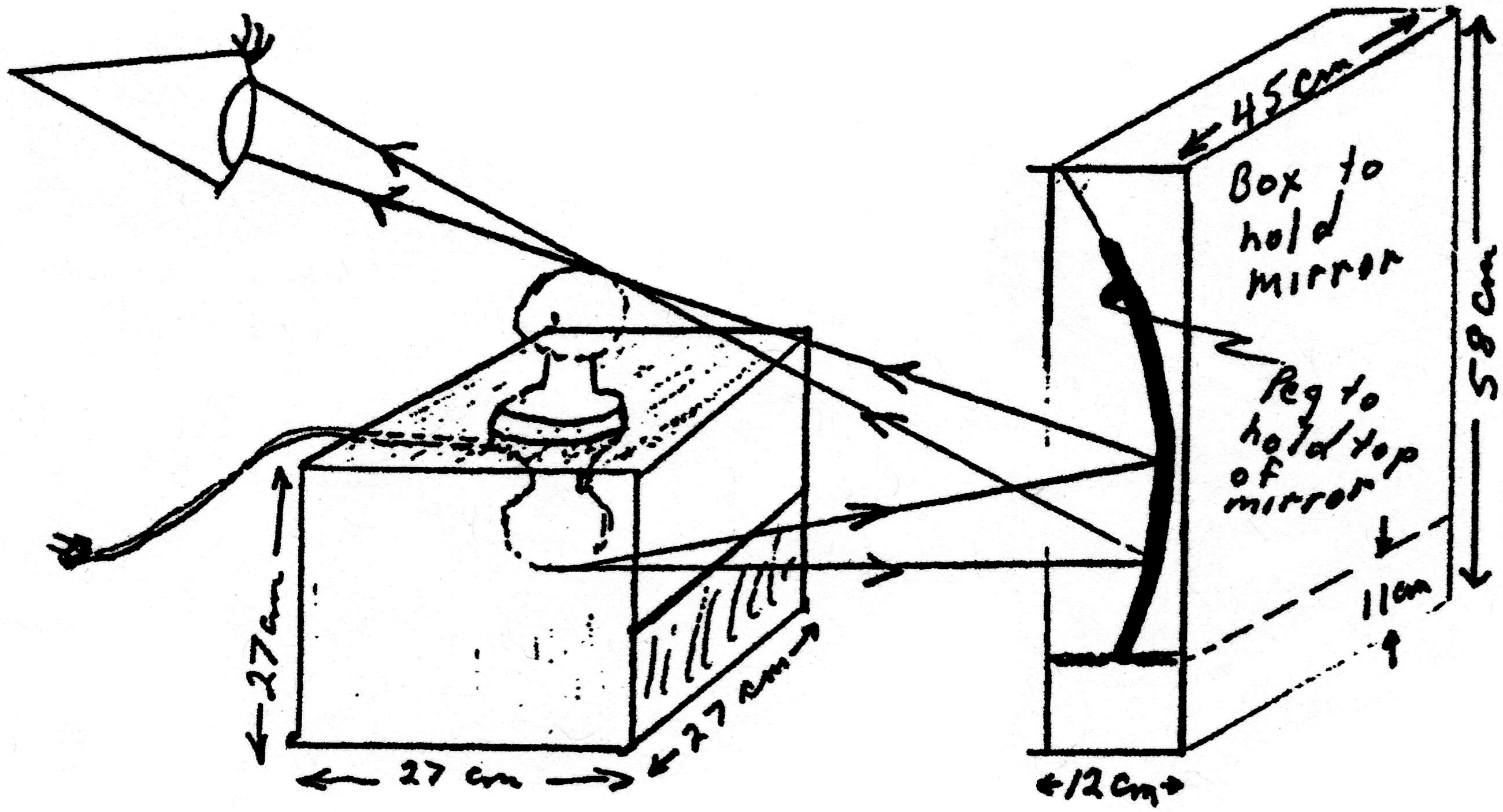Real Image Demonstration
April 01, 1988 Filed in:
Demo CornerDon Murphy, Sydenham High School
Many demonstrations can be made not just interesting but truly memorable by “setting up” the students a bit beforehand. A rather well-known demonstration involves a real flowerpot and a flower suspended upside down inside a box placed 2 focal lengths in front of a large concave mirror. The viewer sees an illusion of the flower being on top of the box but the image disappears when the viewer approaches too close. The apparatus on hand at our school for a similar demo is illustrated below, but in this case a real image of a light bulb is formed.

The box portion of the apparatus is commercially available
1 or could easily be made. Large concave mirrors (40 cm diameter, 28 cm focal length) are also available for about $45.
The students are set up by first having the box sitting on the teacher’s desk at the front of the room with the open side away from the students. A low power light bulb is already in place in the dummy top socket. A marker may be used to doodle a face on the bulb with a few hairs on top. The students are then sent from the classroom. (The doodling could be done at the end of the class the day before the actual demonstration is to be done.)
When the students are out, the bulb is placed in the live socket inside the box and the concave mirror is set in place. (The apparatus is set up across the room from the entrance door.) The students are then let in, a couple at a time, and asked if they can sketch a few more hairs on the top of the bulb. They usually say “Sure!” and grab the marker handed to them only to have the bulb ‘disappear’ as soon as they get within ‘drawing distance’. The first students to enter the room gleefully await the reaction of those to follow.
It is interesting to note that, when surprised in this way,
all students say that they see the image in
front of the mirror. The fact that a real image is formed is readily shown by placing a piece of paper at the top socket. However, in past years, when the mirror has been clearly shown to the students and an object placed at a location to give an image in front of the mirror, many students would still say they see the image
behind the mirror. Perhaps we are too accustomed to “behind-the-mirror image” to see otherwise.
References
- Available from Sargent-Welch. It is incorrectly described in the catalogue as forming a virtual image.
Column Editor: Ernie McFarland, Physics Department, University of Guelph, Guelph, Ontario, N1G 2W1 Tags: Optics


